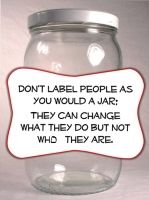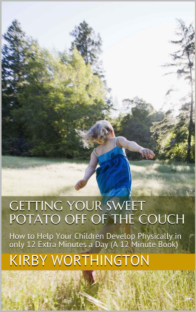How would you describe your child?
 There are a number of helpful rhymes that Kirby, our resident expert, has come up with to aid us in remembering key concepts of child-rearing and development. We’ll be covering a few of them in the weeks ahead and will start off with this clever ditty:
There are a number of helpful rhymes that Kirby, our resident expert, has come up with to aid us in remembering key concepts of child-rearing and development. We’ll be covering a few of them in the weeks ahead and will start off with this clever ditty:
After a recent move from the United Kingdom to the United States, my eight year old has taken to labeling herself as a “tomboy”. I’m not really sure what she means by it. I observe that she doesn’t enjoy sports as much as I did when I was a child. However, she has switched out her skirts for shorts or pants to fit in more with the culture around her. When does a stereotype become a type of who we are and what we do? When does a certain pattern of choices or certain actions begin to define our identity?
These are important questions for parenting, for the very way we talk to our children. Are we speaking to their choice of action or to who or what they are? By doing the latter, we begin to label them in some way, to define their identity. It may be second nature for us to label someone as good or bad: “Those are the good guys in the movie and those are the baddies.” However, it is really significant to our little people that they hear us speak to what their actions are and the outcome of those actions. Instead of saying “What a bad boy!” – thus defining the boy’s whole identity as “bad” – we could describe the choice as bad or the outcome of his actions as hurtful.
Let’s start listening to ourselves as we speak to our children, especially in heated moments. Ask your friends and family to listen to your words so as to notice if you are labeling your children. Then, make an informed decision to speak to their choices, for that’s what can change more easily. Actions and choices can transition from bad to good with much less effort than a perception of oneself. It is much more difficult to change a child’s idea of who they are once they have repeatedly heard that they are bad (difficult, trouble… you fill in the blank).
Many times a child who is having trouble learning something in particular may misbehave to take the attention off of their failure and onto something else (like acting out in a certain way). Instead of labeling the child him- or herself as a problem, speak to the acting out as a choice that hurt someone. The child is not simply “a naughty child” – they make some good choices, right? – but what they did is certainly a choice that is naughty and should not be repeated.
We each have the ability and opportunity to make good choices. These choices will benefit those around us. Let’s help our children bring joy rather than harm into other’s lives. So the next time you come upon your child doing something you clearly do not permit and hear the words stupid, lazy, or careless ringing out in your head, remember to give the child the option to change their behavior; don’t simply define who they are by their bad choices.
Here’s some practical food for thought:
Instead of “How many times do I have to tell you?!”, which shames them and implies that they are stupid, try “Let’s see if you can understand it better if I explain it this way.” Then after they carry out the task that was supposed to be done, make sure to encourage their completion of it. Children encode and remember things so much more when they are encouraged as opposed to criticized.
Instead of “What’s the matter with you?!” or “What’s your problem?”, which defines them as being a problem, try “You’re choosing to do the same thing over and over again. This is frustrating to me. How can we solve this problem together?”
Related Posts
By accepting you will be accessing a service provided by a third-party external to https://growthandgiggles.com/

